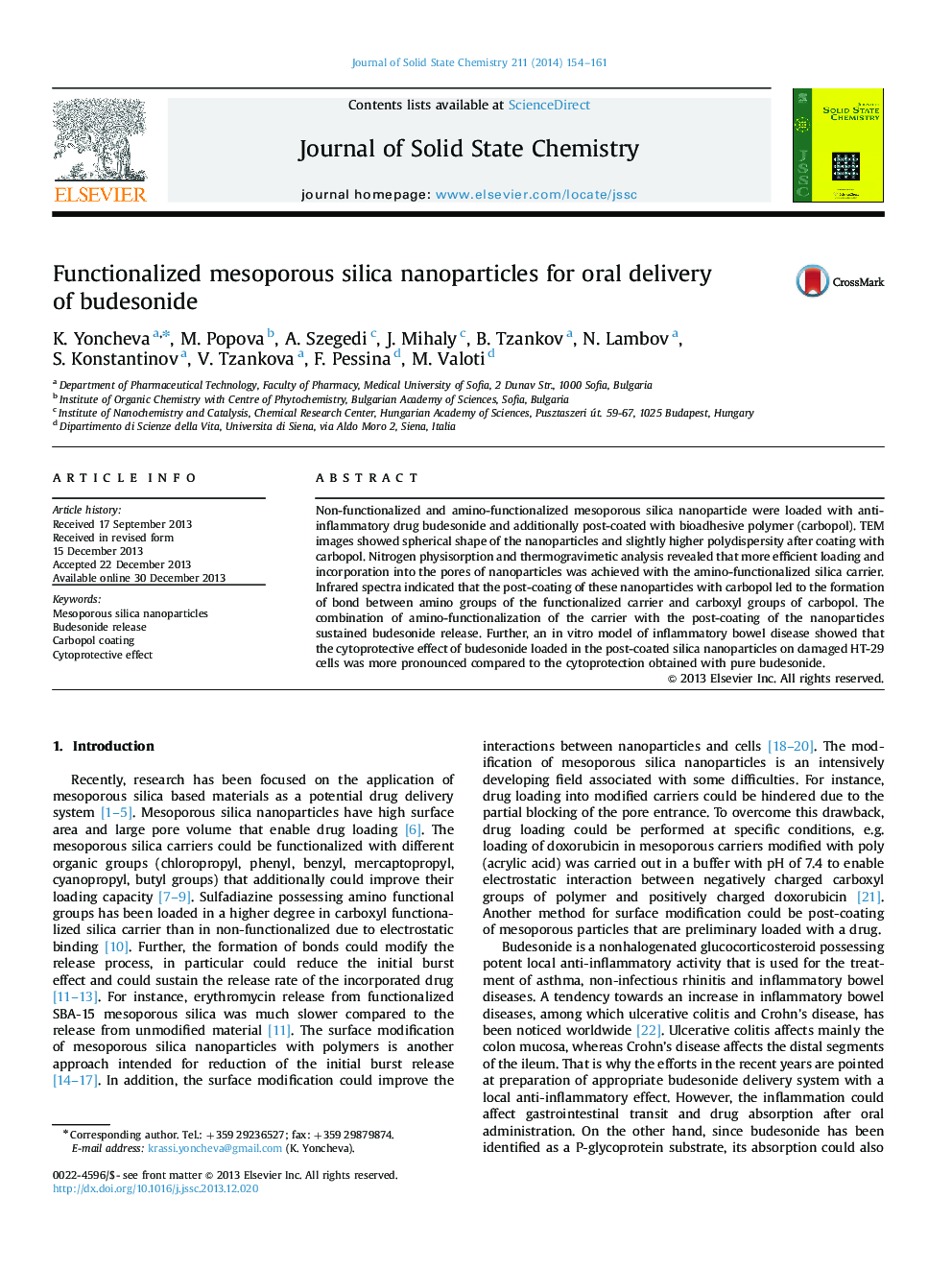| Article ID | Journal | Published Year | Pages | File Type |
|---|---|---|---|---|
| 1329022 | Journal of Solid State Chemistry | 2014 | 8 Pages |
•Higher drug loading in amino-functionalized mesoporous silica.•Amino-functionalization and post-coating of the nanoparticles sustained drug release.•Achievement of higher cytoprotective effect with drug loaded into the nanoparticles.
Non-functionalized and amino-functionalized mesoporous silica nanoparticle were loaded with anti-inflammatory drug budesonide and additionally post-coated with bioadhesive polymer (carbopol). TEM images showed spherical shape of the nanoparticles and slightly higher polydispersity after coating with carbopol. Nitrogen physisorption and thermogravimetic analysis revealed that more efficient loading and incorporation into the pores of nanoparticles was achieved with the amino-functionalized silica carrier. Infrared spectra indicated that the post-coating of these nanoparticles with carbopol led to the formation of bond between amino groups of the functionalized carrier and carboxyl groups of carbopol. The combination of amino-functionalization of the carrier with the post-coating of the nanoparticles sustained budesonide release. Further, an in vitro model of inflammatory bowel disease showed that the cytoprotective effect of budesonide loaded in the post-coated silica nanoparticles on damaged HT-29 cells was more pronounced compared to the cytoprotection obtained with pure budesonide.
Graphical abstractSilica mesoporous MCM-41 particles were amino-functionalized, loaded with budesonide and post-coated with bioadhesive polymer (carbopol) in order to achieve prolonged residence of anti-inflammatory drug in GIT.Figure optionsDownload full-size imageDownload as PowerPoint slide
